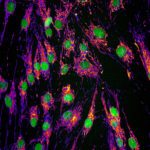Link to Pubmed [PMID] – 28472392
Cardiovasc. Res. 2017 Aug;113(10):1113-1123
Aims: Heart failure (HF) has become an epidemic and constitutes a major medical, social, and economic problem worldwide. Despite advances in medical treatment, HF prognosis remains poor. The development of efficient therapies is hampered by the lack of appropriate animal models in which HF can be reliably determined, particularly in mice. The development of HF in mice is often assumed based on the presence of cardiac dysfunction, but HF itself is seldom proved. Lung ultrasound (LUS) has become a helpful tool for lung congestion assessment in patients at all stages of HF. We aimed to apply this non-invasive imaging tool to evaluate HF in mouse models of both systolic and diastolic dysfunction.
Methods and results: We used LUS to study HF in a mouse model of systolic dysfunction, dilated cardiomyopathy, and in a mouse model of diastolic dysfunction, diabetic cardiomyopathy. LUS proved to be a reliable and reproducible tool to detect pulmonary congestion in mice. The combination of LUS and echocardiography allowed discriminating those mice that develop HF from those that do not, even in the presence of evident cardiac dysfunction. The study showed that LUS can be used to identify the onset of HF decompensation and to evaluate the efficacy of therapies for this syndrome.
Conclusions: This novel approach in mouse models of cardiac disease enables for the first time to adequately diagnose HF non-invasively in mice with preserved or reduced ejection fraction, and will pave the way to a better understanding of HF and to the development of new therapeutic approaches.

